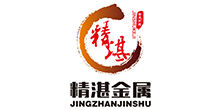Ali: Have you thought about what makes metal so strong and useful? One of the types of metals that matter is steel. Steel is essential for lots of our important things, such as buildings, cars and bridges. A slab is a large piece of steel in its infancy. It is then melted again and transformed into thin sheets through a process known as rolling. There are 2 primary processes for rolling steel — cold-rolled and hot-rolled. Each kind of steel has its own characteristics, making it better for certain tasks than others.
Erot selitetty
Let’s dive deeper into hot-rolled steel. Hot-rolled 304 ruostumaton teräsputki is heated up before it is shaped. In this heating process, hot-rolled steel is becoming stronger and tougher. The heat makes the steel more pliable, meaning it is easier to bend to whatever shape. As a result, hot-rolled steel is commonly used in construction projects where strength is critical.
“Well, now let’s talk about cold-rolled steel.” They have less carbon than most other steel types, and they are rolled at room temperature (which means that the individual sheets are not heated before they are shaped). Cold-rolled steel has a much smoother surface and has a better finish than hot-rolled steel. Cold-rolled steel gets a much cleaner look but isn’t as strong as hot-rolled steel. So cold-rolled steel is good for some applications, but probably not the best choice if it's for very massive/ridged structures.
Jokaisen tyypin hyvät ja huonot puolet
Hot-rolled and cold-rolled steel both have their benefits and drawbacks. Hot-rolled steel is very tough and is great for heavy-duty tasks. For instance, hot-rolled steel is frequently utilized in tall skyscrapers and strong bridges since they are expected to support a considerable amount of weight without bending or breaking. But hot-rolled steel also is more expensive. That is because heating a metal requires lots of energy, making it more expensive.
Cold-rolled steel, on the other hand, is typically less expensive, and easier to manipulate. This makes it well-suited for cars, home appliances and similar applications. Cold-rolled 430 ruostumaton teräslevy also has a smooth surface which is very good for painting or applying other finishes for a nice finish in the final product. The one disadvantage to cold-rolled steel is that it is weaker than hot-rolled steel. This means it is more susceptible to cracking or breaking under extreme pressure or stress.
When to Use Each Type of Steel
Cold rolled vs. hot rolled decision really depends on your project. Keep in mind that if you need something very durable and strong, such as a bridge or a big building, hot-rolled steel is commonly the best to work with. It's durable and will stand up to heavy use over time. But if you are building something that requires lower costs and simple manipulation, such as a car or an appliance, then cold-rolled steel is the right choice for you. It has a much better working envelope and can be cheaper.
Why Steel is Important
Steel manufacturing is a crucial step in this process as it allows us to create various strong and resilient products that we utilize in our daily life. And without Ruostumaton teräsputki, we couldn’t erect skyscrapers that reach into the sky or strong bridges that can hold heavy cars and trucks. Steel is used in cars and home appliances too, which makes them sturdier and gives them longer-life period. Steel also improves the quality and reliability of products, no matter what the size– large machines (like a building) and small machines (like a kitchen appliance).
Well to wrap it up cold-rolled and hot-rolled steels are used uniquely due to their specific properties. Hot-rolled steel is stronger, which is why it is used in heavy construction projects, but it is also costlier. Cold-rolled steel is less expensive and easier to work with, making it ideal for cars and appliances, but it is not as strong as hot-rolled steel. When selecting which type of steel to use, consider the requirements of your project. The steel making is significative, as it allows us to manufacture robust and durable things, which we need for factories, cars, and many other most of the used things in our daily lives.

 EN
EN
 AR
AR
 BG
BG
 HR
HR
 CS
CS
 DA
DA
 NL
NL
 FI
FI
 FR
FR
 DE
DE
 EL
EL
 HI
HI
 IT
IT
 JA
JA
 KO
KO
 NO
NO
 PL
PL
 RO
RO
 RU
RU
 ES
ES
 SV
SV
 TL
TL
 ID
ID
 SR
SR
 VI
VI
 TH
TH
 TR
TR
 MS
MS
 BN
BN
 MY
MY
 KK
KK

